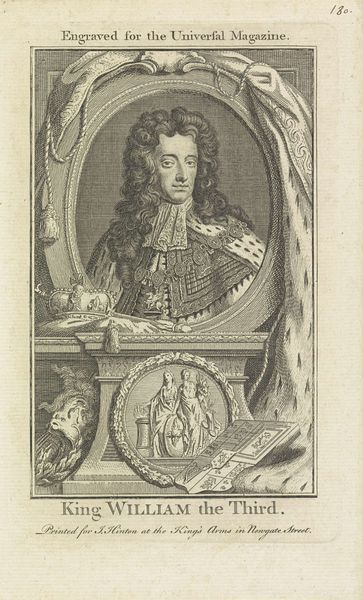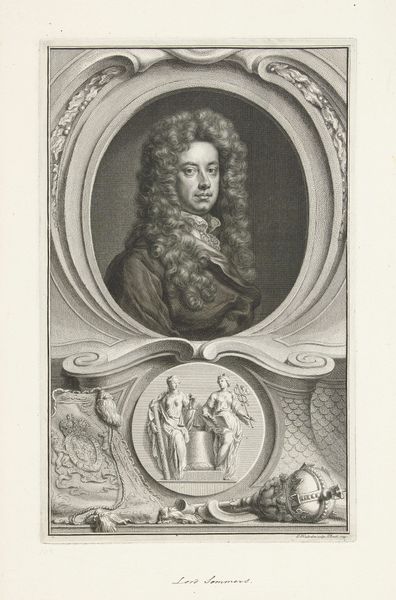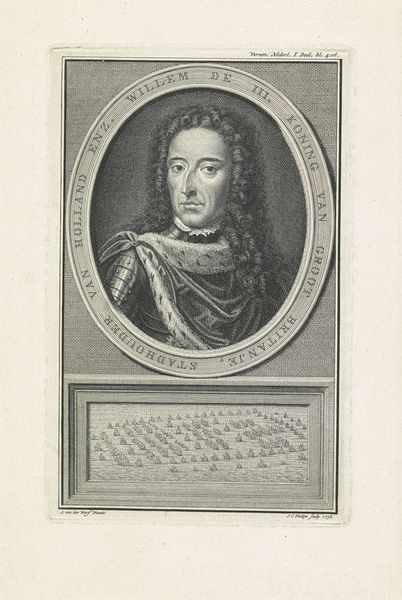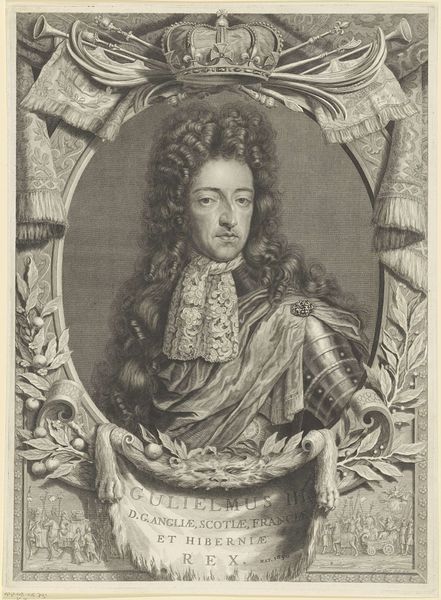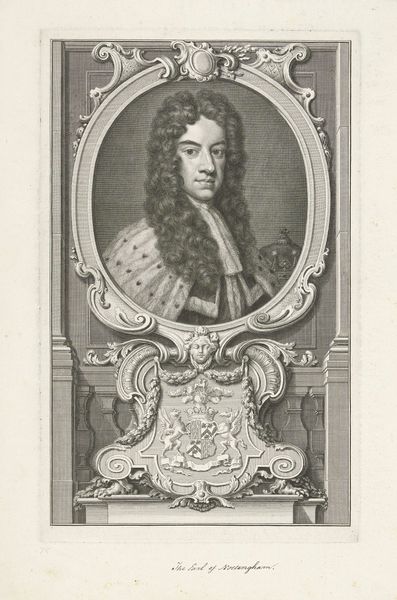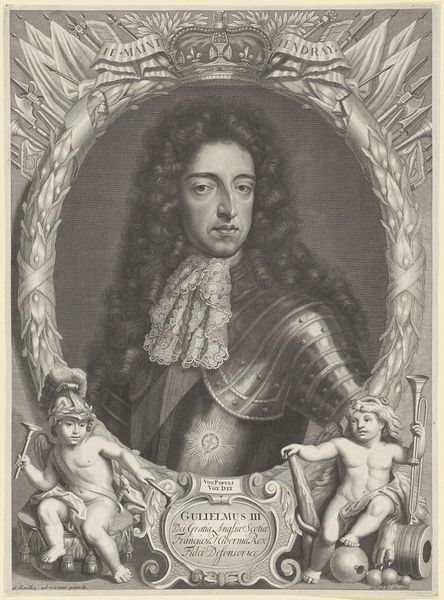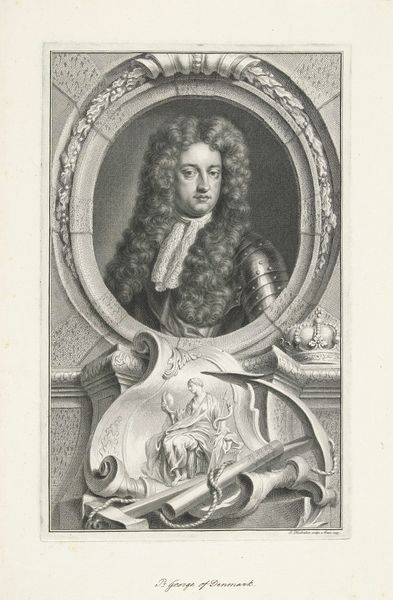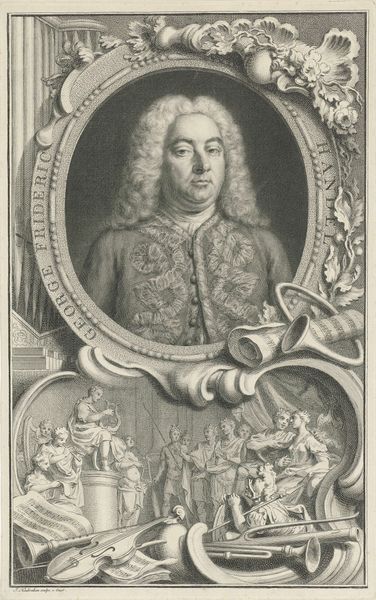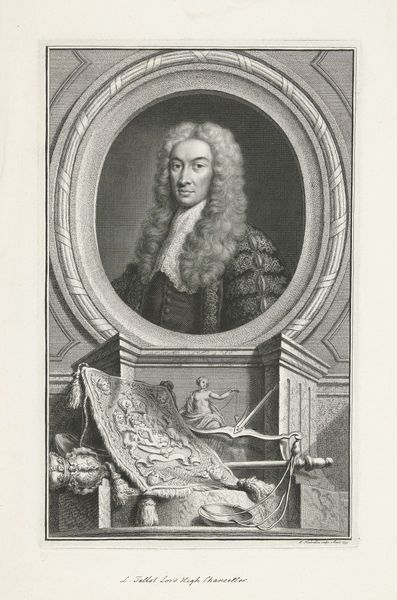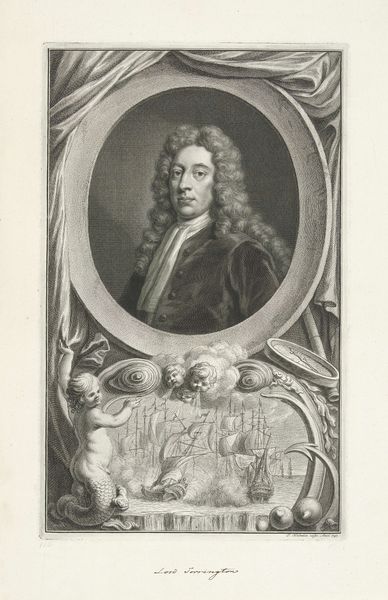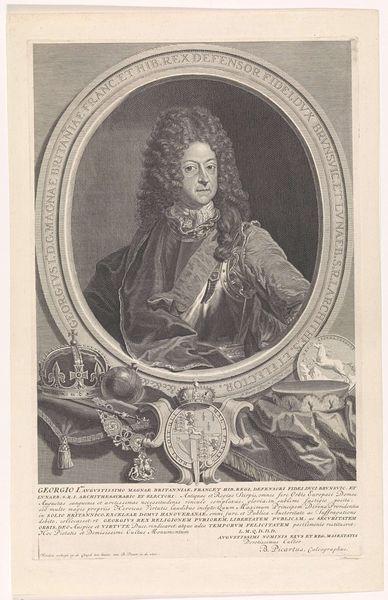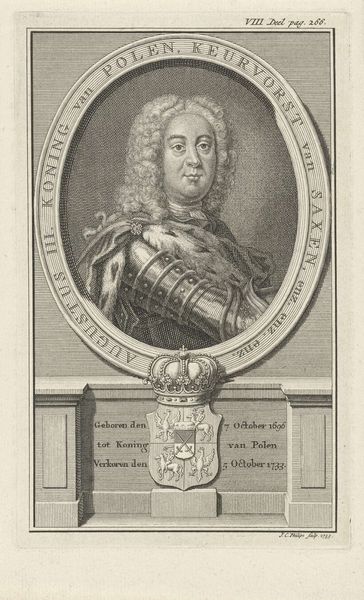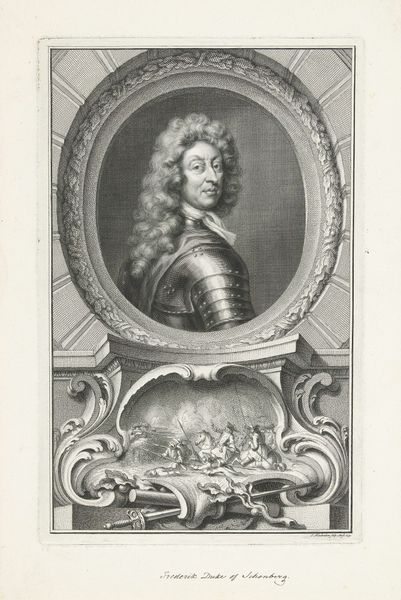
print, engraving
#
portrait
#
baroque
# print
#
old engraving style
#
caricature
#
classical-realism
#
form
#
line
#
history-painting
#
engraving
#
realism
Dimensions: height 354 mm, width 221 mm
Copyright: Rijks Museum: Open Domain
Editor: Here we have Jacob Houbraken's 1744 engraving, "Portret van Willem III, prins van Oranje." It’s incredibly detailed, almost photographic in its rendering of textures, from the Prince's elaborate wig to the ermine trim on his robe. How do you interpret the symbolism at play in this piece, beyond just being a formal portrait? Curator: Well, the portrait itself needs to be seen within the context of power and representation. This isn’t simply a likeness; it’s a carefully constructed image meant to convey authority. Consider how the Prince is framed, quite literally, by symbols of royalty. Editor: Yes, the crown and scepter, certainly. But I’m also curious about the imagery beneath the portrait, the two female figures and the book. Curator: Precisely. Who do you think those women represent? The figures invoke classical ideals of justice and peace, a deliberate nod to the virtues associated with leadership and the right to rule. It’s important to remember that portraiture of this era often served as propaganda, aligning the sitter with established ideals and reinforcing his legitimacy. The book adds another layer – what do you think it signifies? Editor: Perhaps learning, wisdom… a connection to the intellectual movements of the time? Curator: Possibly, but also consider how printed material played a role in disseminating power during this period. This was, after all, the Enlightenment era, and printed images helped cultivate both consent and dissent. Consider how this image might be received in various segments of Dutch society. Editor: So the portrait isn't just about the Prince; it's a statement about the nature of power and its visual construction, distributed widely to shape public perception. Curator: Exactly. These portraits operated as ideological tools, defining and negotiating authority within complex socio-political landscapes. I am fascinated by that visual dialogue! Editor: It’s amazing to think about how even a seemingly straightforward portrait can be such a rich source of information about its time. Thank you for this expanded perspective. Curator: It's vital that we consider those deeper historical roots and continue exploring the influence on our understanding of society. Thank you!
Comments
No comments
Be the first to comment and join the conversation on the ultimate creative platform.
